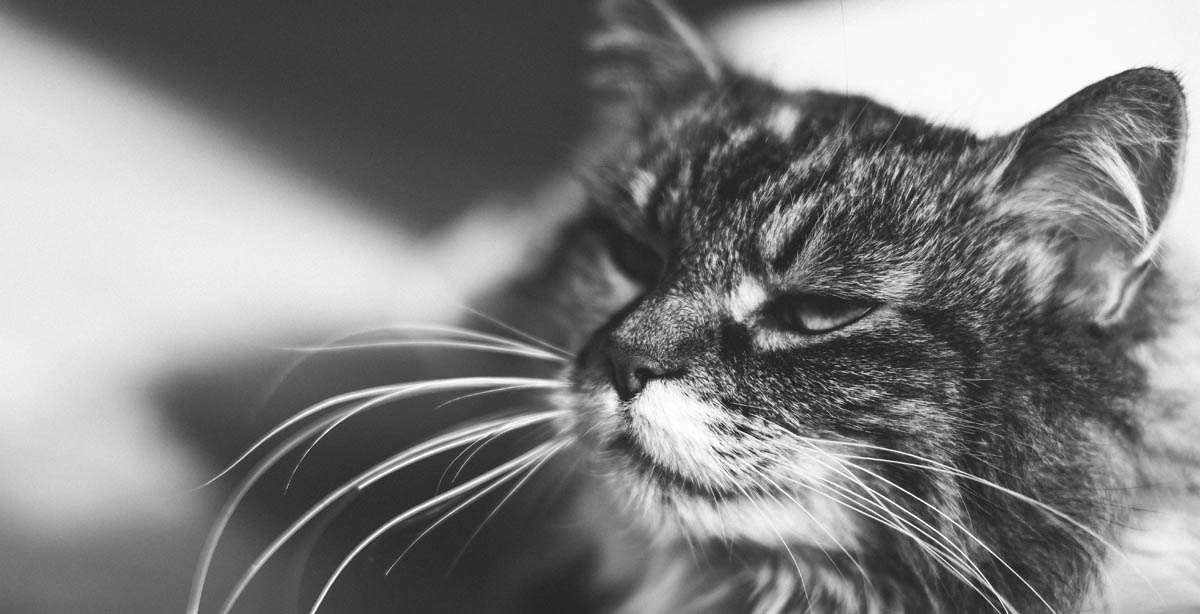Dying behaviour at a glance
|
Dying is a process in which physical signs and behavioural changes occur. In this article, we will take a look at the dying behaviour of cats and what you can do to help.
The final phase of dying is known as active dying, where the body begins the process of shutting down. During this time, many changes are occurring, including changes in the cat’s behaviour.
At this point in the final stage of your cat’s life, care switches from treatment to palliative. The goal is to keep your cat comfortable, manage symptoms and provide emotional support. It is essential to work closely with your veterinarian during this period. Recognising when a cat is in the active stage of dying can help caregivers make the difficult decision to euthanise.
Sleeping more
Towards the end, the cat will spend most of the time sleeping. Sleep may be restless if the cat is in pain or there may be a decrease in responsiveness.
Care:
Provide the cat with a comfortable bed or blanket to sleep on and keep an eye out for pressure sores which can develop in cats who are immobile for extended periods.
Hiding
Cats are hardwired to hide when they are unwell, which explains why some cats disappear and die. They don’t know they are dying; they do know they are sick, and that makes them vulnerable to predators. The cat may retreat to a quiet location such as the back of a wardrobe or under the bed.
Care:
Confine the cat so that he can’t wander off and hide somewhere unsuitable such as under a house or in a garden shed. Where practical, let the cat choose where he wants to be, it should be in a quiet and safe location with the ability to control the ambient temperature as a dying cat is unable to regulate its body temperature properly.
Grooming less
Any cat lover knows how much time cats devote to grooming. In the final days and hours, grooming stops. The coat can take on an unkempt look and odour.
Care:
If the cat has become incontinent, carefully clean the area to prevent attracting flies and urine scalding of the underlying skin.
Gently groom the cat (if he or she allows) to manage the coat.
Pay attention to bedding, wash soiled blankets and beds.
Loss of interest
The cat no longer shows interest in things he or she used to enjoy, such as greeting you at the door, playing games, chasing flies. Some cats will continue to enjoy these things right up until they enter the active phase of dying, but towards the end, almost all interest will be gone.
Care:
We don’t expect a cat who is actively dying to want to play or greet you at the door, but you can provide comfort during this period and spend time with the cat so that he still feels like he is a part of the family.
Cognitive changes
Cognitive function may decline due to a build-up of toxins in the bloodstream, hypoxemia (low oxygen levels in the blood), electrolyte imbalances, drugs, or dementia. The cat may not recognise you, exhibit a fluctuating level of consciousness, become agitated, anxious, aggressive, and vocalise more often.
Care:
Keep a routine as much as possible and avoid making changes during this period. Cats thrive on routine; this is even more important when a cat is critically ill.
No longer eating or drinking
As death approaches, the cat’s appetite declines and at the very end stops altogether. This can be due to symptoms such as nausea and pain which impact the appetite, or as the body is shutting down and metabolism slows, it no longer requires energy to fuel itself.
Care:
Do not force food or water into a cat who is in the active phase of dying, it can be counterproductive. The body is no longer able to adequately process food and water. A drop of two on the fingers rubbed into the gums can help to keep the cat’s mouth moist and increase comfort.
Changes in personality
An independent cat may become clingy, a clingy cat may prefer to be on his own when they are dying. Some cats need the comfort of a human or fellow animal companion, others would rather be on their own. This is all normal.
Care:
Let the cat lead the way, if he seeks out company, let him have it, if he prefers seclusion, keep a watchful eye from a distance. If the dying cat has a close animal companion, let them spend time together, if the dying cat chooses, unless the cat is sick from an infectious cause which may pose a risk to the healthy pet.
Questions to ask
- What will your cat miss out on tomorrow if he is euthanised today?
- Is your cat having more good days than bad?
- Think of three things your cat enjoys…is he still enjoying them now?
- Are you keeping him alive for you or him?
Grief starts before your cat has passed, and it is an enormous burden to be the one to decide to end their suffering, but that is what we signed up for when we brought them into our lives. Our lifespan is so much greater than a cat’s, it is unlikely most of us will outlive our cats. We must remember not to let the end of their life overshadow the love and joy they gave us.

